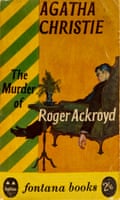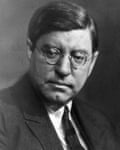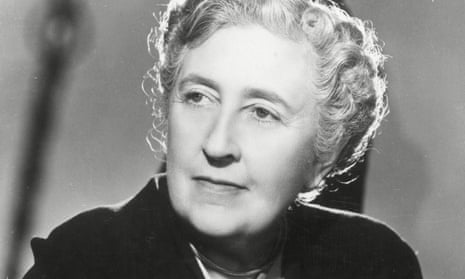The striking plot of one of Agatha Christie’s best-known mysteries, The Murder of Roger Ackroyd, surprises each new generation of readers. But now there is a further twist in the tale. Fresh evidence suggests Christie may have taken the idea from an acclaimed Norwegian author.
Lucy Moffatt, a British translator living in Norway, has found a likely source for the famous solution to the murder in an early English magazine translation of Stein Riverton’s story Jernvognen (The Iron Chariot).
“You do have to wonder if her book was at least influenced by Riverton’s mystery,” said Moffatt.
Christie’s book, published in 1926, swiftly established itself as a classic of the genre. And in the 94 years since, her fans and publishers have been careful to guard the identity of the killer.
Spoiler alert
Those who have yet to read either book may want to look away now.
The literary device the books share is that the narrator himself is revealed as the murderer. “Roger Ackroyd was controversial when it came out for this reason, although it catapulted her to fame as an author,” said James Prichard, Christie’s great-grandson and chairman of Agatha Christie Ltd. “Some people thought it was unfair, as there were rules in crime fiction.”


The key similarity between the Norwegian tale and Christie’s was clear to Moffatt when she began her own translation of Riverton’s work. First published in Norway in 1909, Jernvognen has since been voted the greatest Norwegian crime novel by the Norwegian Crime Novelists Association.
Until now, though, the matching plots looked like mere coincidence, as Riverton’s book did not come out in Britain until after the publication of Roger Ackroyd. In fact, Riverton’s book was not available in English until 2005, and Christie did not read Norwegian.
Case closed then, if Moffatt had not remembered an online reference to the one-off publication of Riverton’s story in a British crime magazine of the era: Tip Top Stories of Adventure and Mystery. It ran for just six months between 1923 and 1924 before it merged with the Sovereign Magazine, but Moffatt tracked down a rare copy in the British Library.
“They obviously like a good mystery too,” said Moffatt. “My contact there, Brian Sherwood, was able to tell me that the April 1924 edition of Tip Top Stories contained a translation of the Riverton story.”
Now Moffatt sees a clear chain of probability linking Christie with The Iron Chariot. “We do not claim this is conclusive proof that Christie ‘borrowed’ the idea for Roger Ackroyd,” said a spokesperson from Lightning Books, the publisher of Moffatt’s recent translation, adding that Christie herself was always suspicious of coincidences.

There are already two acknowledged sources of inspiration for Roger Ackroyd. In later life, Christie wrote to thank Lord Mountbatten for suggesting she make the storyteller the culprit in her next book. In the same letter, she said her brother-in-law, James, had come up with the same ruse.
“Might Christie have also read or been aware of the Riverton story?” asked Moffatt. “Well, the timing is extremely convenient, and she did publish a short story under the pen name of Mary Westmacott in the Sovereign Magazine in January 1926.”
Prichard is wary of any “patronising” implication that his great-grandmother needed men to come up with plotlines for her. And anyway, he argues, it is not the idea that makes a good book, but the execution. “It is possible she read it, as she read a lot, but it is also possible she didn’t,” he said.
Riverton was the pen name of Kristoffer Elvestad Svendsen. In his youth, he changed his name to Sven Elvestad and became a journalist, before switching to writing crime fiction in 1904.
For Moffatt, a Christie fan, the power of Riverton’s book lies in its sinister handling of the environment, which mirrors the killer’s disturbed state of mind. “It is more of a study of madness,” she said, “It uses the landscape as metaphor, while Christie sticks to a smaller canvas.”

Comments (…)
Sign in or create your Guardian account to join the discussion